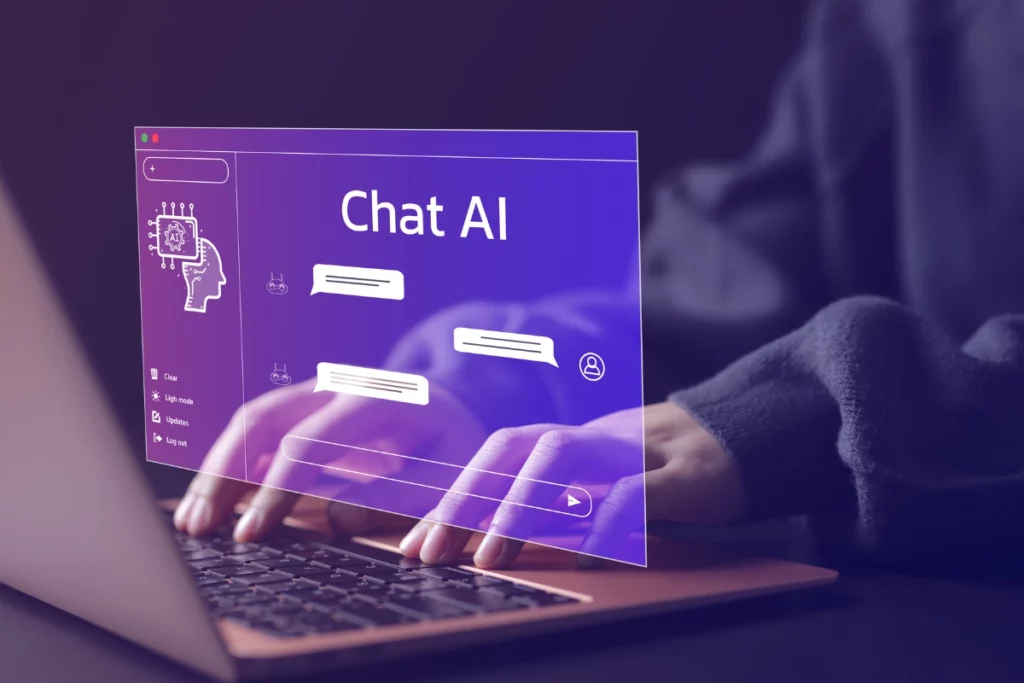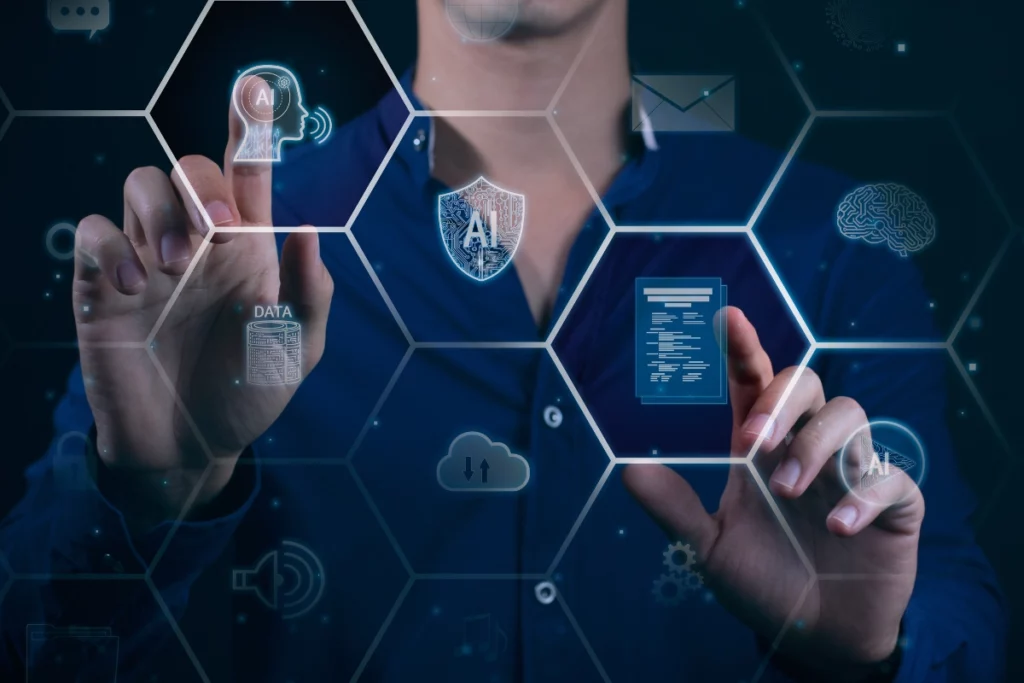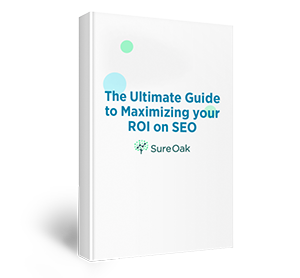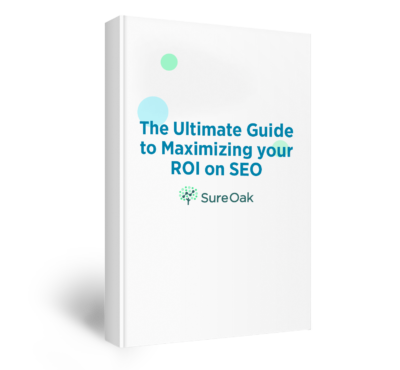
Almost everyone on the internet is talking about artificial intelligence (AI). AI is driving digital transformation in ways many of us never expected. From blog posts to images to songs to videos, AI can create just about anything.
For marketing teams, AI tools present endless possibilities for creating content and driving business growth. However, just like with any other emerging technology, you need to be careful when using AI for business.
Today, we will discuss the do’s and don’ts of using AI tools for marketing so you can make the most out of this powerful technology.
What is AI?
AI refers to the simulation of human intelligence processes by machines, particularly computer systems.
On their own or combined with other technologies (robotics, sensors, etc.) AI systems can perform tasks typically associated with human cognitive functions, such as identifying patterns, interpreting speech, playing games, and making decisions.
Some of the subsets of AI include machine learning (ML) and deep learning. These technologies refer to the concept that AI algorithms can automatically learn from available data and progressively make better classifications or predictions.
Top Generative AI Platforms for Marketing
Here are four generative AI tools that marketers can use to speed up their workflows:
ChatGPT
ChatGPT is undoubtedly the most popular generative AI platform in the market. It has over 180 million users and around 1.6 billion visitors per month.
One common use of this AI tool is to generate engaging content. By providing it with relevant ChatGPT marketing prompts, you can create a wide variety of content, including blog posts, social media posts, and captions. While you’ll still need a human to verify the information and add a human touch, it can be faster than creating content from scratch.
ChatGPT is also a crucial tool for enhancing customer engagement. For example, some businesses use ChatGPT-powered chatbots on their social media platforms to answer frequently asked questions, offer real-time support, and guide users through the purchasing process. Like with content generation, make sure that you are using Chat GPT only as a tool, and not as your customer’s only interaction with your business. If you don’t have any human interactions, you can actually hurt your business.
Here are some other pros and cons of using Chat GPT:
Pros
- Keyword Research
- Content Outline Development
- Content Development (Be careful, there’s a big disadvantage)
- Understanding Search Intent
- Composing and Managing Analytics Reports
- Coding
- Proofreading
Cons
- Limited Understanding
- Lack of Emotional intelligence
- Limited Creativity
- Need for Humanization
- Lacks Expertise
Google Gemini AI
Google Gemini, formerly known as Bard, is Google’s generative AI model. Gemini pulls its information from the web, allowing it to generate up-to-date information.
Also, Gemini AI is multimodal. It can comprehend a wide variety of data, including text, images, audio, video, and code. For marketers, this AI model presents an opportunity to generate diverse forms of content. They can use it to write articles, summarize text, translate languages, generate code, and create visual elements like logos, diagrams, charts, etc.
Still, Gemini isn’t perfect. Google says the AI model struggles with specific tasks, like processing data from long videos or locating precise objects in images. It can also generate inaccurate content, so human intervention is necessary.
Claude.ai
Claude is a next-generation AI assistant developed by Anthropic AI. Anthropic AI is a startup co-founded by ex-OpenAI (the company behind ChatGPT) members and is known for its huge emphasis on AI ethics.
Claude AI can perform various text processing and conversational tasks while maintaining a decent level of reliability and predictability. Marketers can use it to generate text ideas or questions, draft social posts, summarize long documents, analyze code, and more.
One major drawback of Claude is that it can’t be relied on for factual research tasks. When you ask a question in which it doesn’t know the answer, it tends to invent details or generate text based on statistical likelihood. For this reason, you must thoroughly fact-check the information produced by this AI model before publishing.
Jasper.ai
If you’re looking for a ChatGPT alternative that can help you develop both text and image-based content, Jasper AI is an option that can help you in the idea-generation process. Launched in January 2021, the AI platform allows users to produce human-like content for blog posts, emails, social media ads, landing pages, and more. However, like with other AI-generated content, you will still have to edit the content to sound more human to avoid getting penalized by Google.
Jasper is a popular option, especially among search engine optimization (SEO) professionals, because it can produce SEO-friendly copy. It can help optimize your content for specific keywords and suggest other keywords based on your prompts. It can also help optimize titles and meta descriptions to help boost page rankings.
Unfortunately, Jasper’s training ended in late 2019, so some of the content it produces may be outdated. Depending on what you’re creating, you’ll also need to make some heavy edits to get a polished end product and to ensure that it has a “human touch”.

How Does Machine Learning in Marketing Work?
From healthcare to finance to e-commerce, organizations in various sectors use machine learning to drive their marketing efforts. Machine learning in marketing uses algorithms and statistical models to analyze large datasets and extract meaningful insights that can inform marketing strategies and decision-making processes.
Let’s go through several use cases of machine learning in advertising and marketing:
Customer Segmentation
Customer segmentation involves dividing customers into groups based on common characteristics such as age, geographic location, income level, and purchasing habits. These divisions allow you to create personalized marketing campaigns for each group, which can increase customer satisfaction and marketing performance.
Machine learning systems allow you to automate the customer segmentation process. They also help you find hidden patterns in the data that may be difficult to spot with your human eyes. As a result, you can break down broad customer segments into small, specific segments for more effective marketing campaigns.
Personalization
Machine learning-powered personalization can increase customer engagement and satisfaction. These systems can store the purchasing history of each customer and determine the type of products or services that would appeal to them. By recommending these products, you not only increase customer interaction but also boost sales.
Forecasting
Since machine learning models excel at recognizing data patterns, they can help you forecast demand, customer lifetime value, churn rates, and other important business metrics. Accurate forecasting enables you to understand market conditions and position yourself strategically in your industry.
For example, Spotify uses machine learning to predict when a customer is about to leave the platform. This allows the company to take action to prevent customer churn. For example, it might offer a three-month discounted subscription rate to a customer about to unsubscribe. Such actions have seen the company maintain high customer retention rates.
Continuous Sentiment Analysis
Machine learning models can analyze how people feel about your brand, products, or services. This may include monitoring and scanning social media platforms, review sites, and other online sources to determine the sentiment towards your business. The analysis allows you to quickly respond to negative reviews or complaints, which is necessary for building a positive brand image.

Benefits of Using Generative Tools
AI-powered tools can support marketing efforts in a variety of ways, including:
Brainstorming and Idea Generation
Idea generation is a critical part of any successful business strategy. However, coming up with fresh and innovative ideas can be challenging. Enter AI generative tools.
Upon feeding an AI tool with relevant information about your challenge (business goals, industry trends, target audience, etc.), it can generate a wide range of potential solutions in seconds. This saves time and resources compared to using traditional brainstorming methods.
Since generative AI tools are trained on large datasets from a wide range of sources, they can offer unique and diverse perspectives that you may not have considered. Utilizing these unique ideas can help your business stand out in the market.
In addition, AI tools eliminate bias in the idea-generation process. Humans are prone to cognitive biases such as groupthink or confirmation bias, which can affect the quality of ideas. AI tools can analyze your ideas and present any biases present. This will help you think more critically, resulting in better ideas and solutions.
AI Marketing Automation
Generative AI tools excel at automating monotonous tasks, freeing up marketing professionals to focus on core business activities.
Instead of spending hours sending manual replies to your website visitors, you can use conversational AI tools like ChatGPT to produce extensive replies in seconds. AI can also help with other repetitive tasks such as composing emails, designing layouts, generating product descriptions, and summarizing documents.
Automation improves efficiency and productivity in your business by allowing you to do more in a fraction of the time. It also eliminates human error in your process, saving you the time and money you would have spent on control tasks.
Content Creation (Carefully)
Whether you’re looking for help creating engaging social media posts, catchy taglines for your blog posts, or memorable photo captions, AI has got you covered. Besides helping to create content, AI tools can understand an audience’s preferences and your brand voice. This allows you to create messages that resonate with your target audience. Use caution when using AI-generated content to avoid it sounding (or looking in the case of images), too robotic or inhuman. A good practice is to always do a final edit to AI-created content to add back a human-like feel.
Generative AI models can also generate stunning visuals, including images, graphics, art forms, and videos. You can use these visuals to create eye-catching social media posts that leave a lasting impression on users. DALLE.3 and Midjourney are two popular AI image generators you can use in content creation.
Observe Consumer Behavior
Human behavior is complex. What drives someone to make a purchase? Why do some customers remain loyal to your business for years while others quickly jump to your competitors after a few interactions?
Thanks to AI marketing tools, you can observe your customers’ behavior to answer these and other questions. For example, you can use AI tools to analyze various types of data associated with consumer behavior, such as purchase history, demographics, social media activity, and online behavior. You can then use this information to inform advertising and marketing strategies, pricing decisions, product development, and more.
Chatbots are an example of an AI marketing tool that is useful for understanding consumer behavior. About 57% of B2B marketers use chatbots to understand their audiences according to a Statista report. You can use chatbots to analyze data on customer interactions and provide personalized commendations.
Analyze Data
As digital technologies become more sophisticated, businesses have access to massive amounts of data. However, analyzing large datasets can be difficult or even impossible without a proper strategy.
Generative AI tools analyze vast amounts of data using anomaly detection, generative modeling, or causal inference techniques. Here’s how these three methods work:
- Anomaly detection: AI finds unusual data points that don’t fit the normal data pattern or behavior. This can be useful for detecting errors or threats in the data
- Generative modeling: AI creates a probabilistic model to capture the structure or distribution of the data. This can help you learn the patterns, features, or relationships in the data
- Causal inference: AI models establish the cause-and-effect relationships in the data. This can help you understand the impact or attribution of the data
With a proper understanding of the data at your disposal, you can make data-driven decisions that drive business growth.

Dangers of Using AI for Marketing
The use of AI tools for marketing comes with its pros and cons. Here are the top three risks of using AI for marketers:
The Information Isn’t Always Correct
You have an obligation to ensure the information you provide to your audience is accurate. Unfortunately, the biggest limitation of AI is that it doesn’t always provide reliable information.
AI tools are prediction machines. They predict and fill up the next word or phrase that will answer your question. However, since they are not self-aware, they can’t tell when they are making information up.
Publishing erroneous information can damage your brand’s reputation. It can also lead you into trouble with the law, as seen in the lawsuit filed by Georgia radio host, Mark Walters, against OpenAI.
It Doesn’t Sound Human (Because It’s Not)
While an AI tool can generate a 3000-word blog post in seconds, it lacks the creativity of a human. As a result, the content often comes off as unnatural and robotic.
The lack of humanness is a problem even for AI-powered audio and video tools. Your audience can distinguish between AI-generated audio and a natural human voice. The AI audio lacks the speaking intonations of a human (accent, diction, pronunciation, etc.)
Why is this a problem?
Your customers don’t want to engage with cold robots. Instead, they want to make connections with brands that are warm and empathetic. Therefore, when using AI tools, remember that the human touch is critical for genuine brand connection.
AI-Generated Art May Be Stealing From Real Artists
AI programmers use real artists’ work to train their AI models. The artists do not receive compensation for their work, despite the work being copied or potentially stolen from them.
Moreover, most images on the internet are copyrighted by their original artists. It’s illegal to electronically reproduce them without permission. The fact that AI companies do not ask for permission before using images found online to train their AI models means there is a question of copyright infringement.
For example, in 2022, an illustrator named Hollie Mengert found out that 32 of her illustrations had been recreated into an AI model by a Stable Diffusion user. The user went ahead and released the model under an open license for anyone to use, raising serious copyright infringement claims.
However, some AI generators use art only from commercially licensed artists who have contributed their work specifically to train these image generators. Make sure to research any image generation platforms you plan on using to ensure that the art you generate is legal for you to use.

If You Choose to Use AI, Use it Wisely
There is no doubt that using generative AI for marketing has many benefits. But it also comes with risks.
If you want to avoid the dangers of marketing with AI, identify what you believe are the biggest downsides.
Let’s say your main concern is AI tools producing robotic content. You can decide to use AI tools for brainstorming and idea generation but then add your personal touch when creating content.
If you are concerned about copywriting infringement when generating images with AI, you can look for an AI company that makes its stance clear on copyright laws. Or use AI tools to create an outline but produce the images yourself.
Finally, keep up-to-date with the AI industry and related laws to ensure you’re not using AI in an illegal or unethical way.
Balancing AI With the Human Touch
The use of AI tools for marketing is growing at an incredible rate. But being too reliant on AI might do your business more harm than good. For best results, AI should be used in close supervision by a human being.
If you want to achieve your digital marketing goals and use AI responsibly, our team of experts at Sure Oak is ready to help you. We combine the best minds with the best strategies to make your big ideas a reality.
Schedule a free strategy call to learn more.




